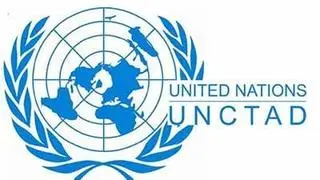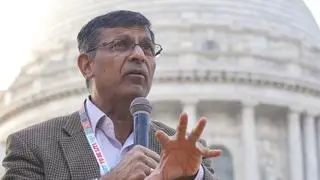The Indo-US relationship needs to deepen as America races in the new digital world and it will require even more of the deep Indian talent pool, and more of that talent will find a home in the US. The likely changes in immigration will only fuel this movement. The Indian service firms, which have grown large and profitable on labour arbitrage, should evolve and adapt fast to this new reality, says Peter Bendor-Samuel, Chief Executive Officer at Everest Group, in an exclusive interaction with BusinessLine .
What should India expect from the new US administration as far as immigrant tech work visas are concerned?
There are three critical components to the immigration riddle: the law, the rules and the administration of the rules. The new Biden administration is likely to face a divided Congress and it is unlikely to attempt to change the laws. Having said that, it is much more favourably disposed to immigration and the free flow of talent across borders, and so it will likely move to address the rules and the administration. A concerted effort in this area could start to show changes within 18 months, but will likely take 2-3 years to fully work through. The administration of these rules and laws can change much faster, and we are likely to see meaningful changes as soon as the new government takes over. It is important to note that it is the administration of these laws which has had the biggest impact under the Trump administration and so a change in this area will prove significant.
Trump’s H-1B visa scrutiny overdrive made Indian companies accelerate localisation in the last 2/3 years and this has been eating into the margins and profitability of these companies. Will this witness a change now?
With respect to the impact of these expected changes on industry margins, I think the prospect is less optimistic. The reason for this is that there is a secular trend driven by clients that more work be done onshore, the reasons for this are diverse, but centered around improved productivity and closer alignment of IT and engineering with the business stakeholders. The new innovations in DevOps and other related operating models favour teams that are in the country or at least in similar time zones. The distributed model of the large India-based talent factories is still useful for some work, but as more work shifts to these new models there is pressure to increase the proportion of work done within the country.
As we know when the ratio of work shifts towards more work in a country, then the profitability declines. If the Biden administration does relax the gauntlet of getting talent approved for visas, this may enable more STEM workers in the US but will not impact the underlying secular trend to have more work done in close proximities. In fact, it may make it more possible as there is not sufficient STEM talent without increased immigration to support this work. Hence, we may find a growing proportion of work done in the country, thus putting pressure on industry margins.
Nasscom offered the President-elect Biden help in filling the STEM skill gap in the US. Will the new administration accept this offer and relax visa rules?
I think it is unlikely that a US government would overtly want to be seen as looking for help on such a sensitive issue from a foreign organisation, regardless of how close the relationship with that country was becoming. They will likely welcome any and all help, but will not want to be seen as looking beyond their own country to officially address the issue. In other words, they would not want the Republicans using this as a point of national pride in the next elections.
When will the US on its own be able to fill the gap in STEM talent, cut the soaring unemployment rate and fill half a million vacancies that exist in computer occupation in the country?
It would take a substantial restructuring of the US higher education for the US to be able to meet its STEM needs. This seems unlikely under either administration so we can expect the US to be operating in a STEM deficit for the foreseeable future. Given that the localisation efforts are highly likely to continue and clients are increasingly expressing their preference for a diverse talent mix, we do not expect the industry to be able to achieve increased margins from importing more labour.
With respect to the legal challenges to the rules, we can expect the new administration to attempt to withdraw, fail to pursue or most likely come to a settlement favourable to the more open borders policy that the tech firms favour. Hence, I think it is highly likely that the US is moving into a period where immigration of all types and particularly the high skill categories is made much easier.
What does this power change mean to Indo-US tech collaboration?
The relationship between the two countries was strengthening under the Trump administration, it makes sense that this would continue under Biden. It may be noted that the Trump administration was unable to change the laws but through rule making and most importantly through the administration of the process, succeeded in dramatically changing the landscape for H-1Bs, L1s and other immigration visas. The rules will take some time to roll back or change as it is still unclear how much of this the Biden administration will proceed with.







Comments
Comments have to be in English, and in full sentences. They cannot be abusive or personal. Please abide by our community guidelines for posting your comments.
We have migrated to a new commenting platform. If you are already a registered user of TheHindu Businessline and logged in, you may continue to engage with our articles. If you do not have an account please register and login to post comments. Users can access their older comments by logging into their accounts on Vuukle.